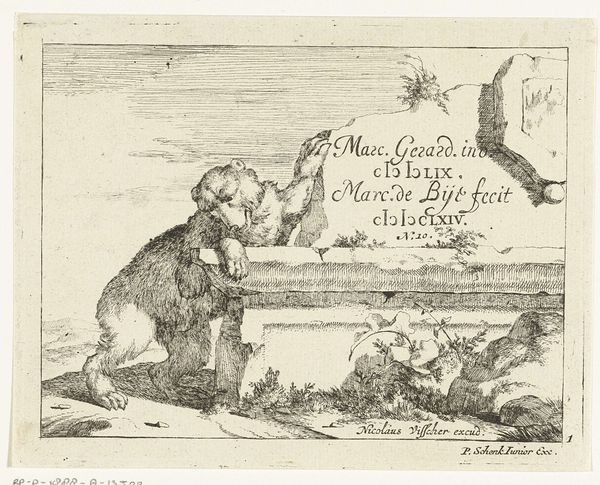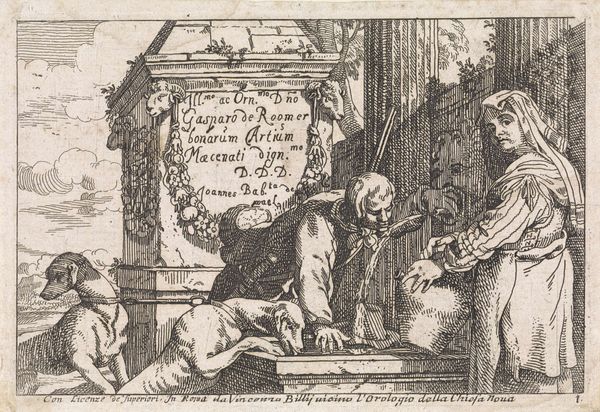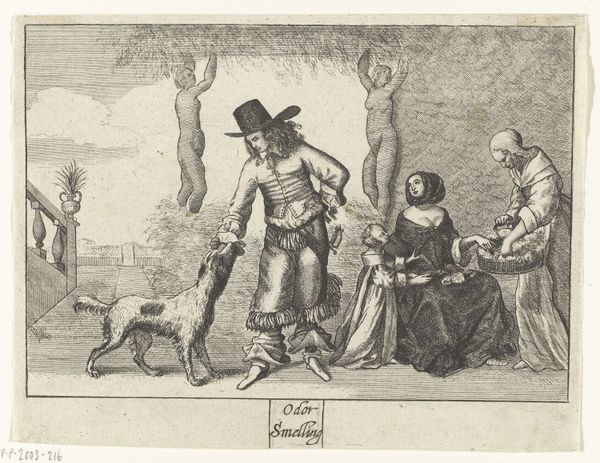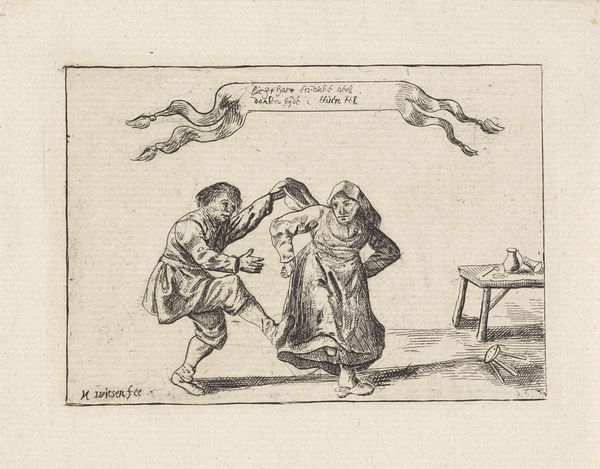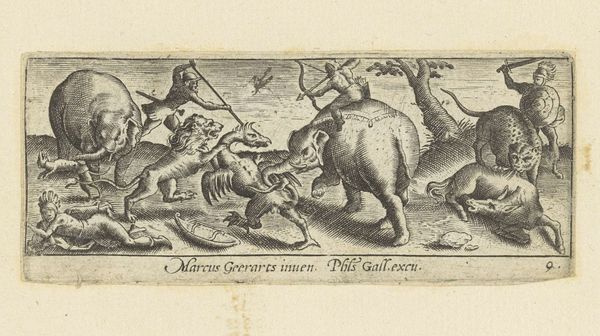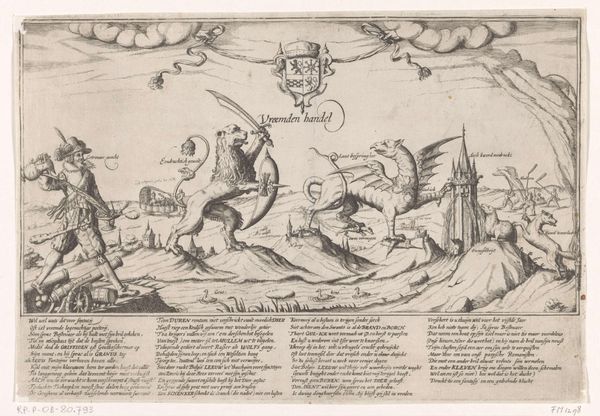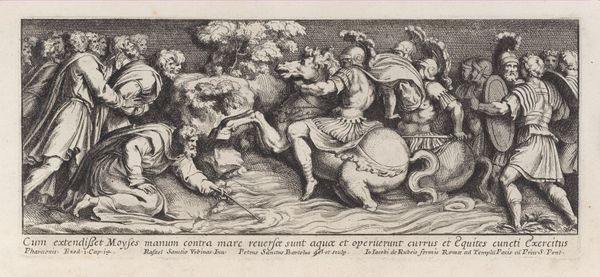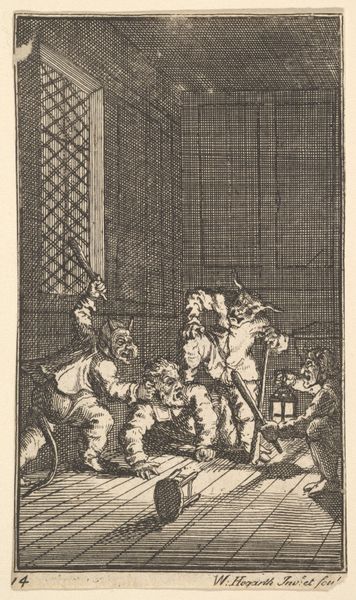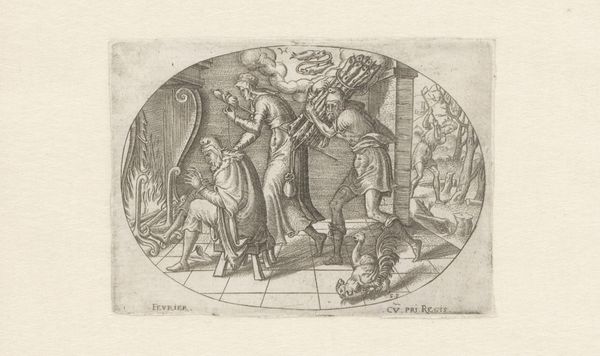
drawing, print, ink, engraving
#
drawing
#
baroque
#
animal
# print
#
pen illustration
#
figuration
#
ink
#
engraving
Dimensions: height 105 mm, width 141 mm
Copyright: Rijks Museum: Open Domain
Editor: Here we have "Bear at a Stone Wall," an engraving in ink by Marcus de Bye, created around 1664. It’s got this slightly melancholic mood with a furry bear clinging to what appears to be a ruined wall. What do you see in this piece? Curator: Structurally, the artist uses a strong horizontal line with the stone wall to divide the composition. This creates a sense of enclosure, trapping the bear within a defined space. Note the meticulous detail in the bear's fur, achieved through varying line weights and hatching techniques. The wall, however, appears less refined. What is the effect of that? Editor: It does make the bear the definite focal point of the work, since its textures and volume really pop out when compared to the background. Curator: Precisely. Now, consider the perspective. It's slightly awkward, isn't it? The wall seems too high for the bear, almost as if the artist intentionally disrupts our sense of spatial logic. Furthermore, notice the artist signature integrated into the wall. It serves less as identifying the work and more as integral with the rest of the subject matter. How does that affect our understanding? Editor: I suppose that blurs the line between art and reality. It’s as if the artist wants us to consider that this bear, and this wall, exists within a constructed space that acknowledges artifice. The piece is becoming self-aware in a sense. Curator: A keen observation! The contrast between the wildness of the animal and the rigid structure calls into question the themes of confinement versus the natural state of being. These dualities work in tension in the artwork, wouldn't you agree? Editor: Definitely. It highlights how the choices in form and technique aren’t just decorative; they're fundamental to the message. Curator: Indeed. A study in lines and form can certainly enrich a cultural experience.
Comments
No comments
Be the first to comment and join the conversation on the ultimate creative platform.
